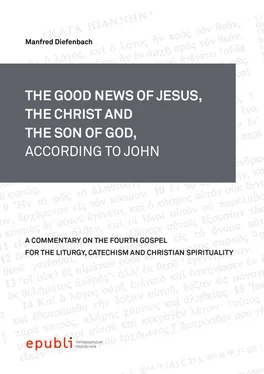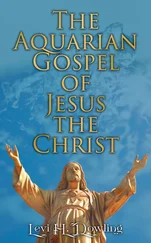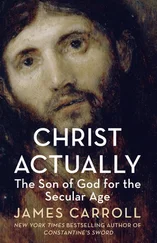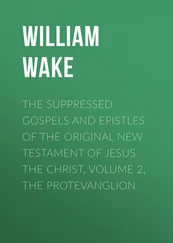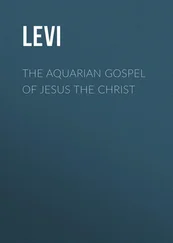+ “New Born” as “Eternal Life” for Believers in the Lifted Up “Son of Man” (vv. 13–17 238 )
v. 13:After Jesus’ discourse from the “ earthly ” things (cf. vv. 3–8) He starts His conviction of the “heavenly/transcendental” things (cf. vv. 13–21). In the same Greek words (“ ascended ” in v. 13a and 1:51d; 6:62 – “ descended ” in v. 13b and 1:51e) of Proverbs 30:4 239, the Incarnated Jesus of Nazareth, “ the Son of Man ” 240(cf., for example, John 1:51; 8:28; 9:35; 12:23, 34; 13:31 as an allusion to Daniel 7:13–14) – note that the verse 13b 2is connected with verse 14b – and at the same time “ the Son of God ” 241(cf. vv. 16b, 17a, 18c and in John 1:14, 18), came from the “heavenly ”, divine, transcendental sphere to earth. At the end of His “ earthly ”, immanent ministry in words and deeds, the Crucified and Risen Jesus Christ went back into “ Heaven ” (note the connecting of v. 12c with v. 13a, b 1). The first term with the meaning of ascension is in the perfect tense that means this act(ion) is a finished fact in past (yesterday) but with a presence (today) and in the future (“ eternal ”/“forever” in the sense of Hebrew 13:8).
v. 14:In this context, Jesus recited and applied to Himself the story of the bronze “ serpent/snake in the wilderness ” (cf. Numbers 21:8–9, 11 – the so-called “4 thbook of ‘ Moses ’”). Then in the desert, “ Moses 242 lifted up 243” a bronze “ serpent/snake ” 244on a staff and Jesus compared it with His Crucifixion (in Jerusalem – cf. John 8:28; 12:32–34; 19:16–38; Philippians 2:6–11 in the view of Isaiah 52:13–53:12) as the “ Lamb of God ” (cf. John 1:29, 36). Here the main topic is not the typology of Moses but rather the parallel use of the verb “ lift up ” (v. 14a, b). In contrast to Abraham, who wanted to sacrifice his only son Isaac, only God can be the subject of a divine “lifting up”-action (cf. 8:28; 12:32, 34). Jesus who was “ lifted up ” (by God) is at the same time the Crucified “ Son of Man ”, “ the Son of God ”. Jesus’ Death was not an “accident” or a “catastrophe” either, because it was God’s will and plan in Jesus – He “ must ” (in Greek “ de ῖ ” in vv. 7c, 14b and in Mark 8:31/Matthew 16:21; Luke 9:22 [Jesus’ first prediction of His Passion) do it as an everlasting deed.
In a similar way to the Apostle Paul, the Fourth Evangelist has developed his “theology of resurrection” of Jesus who has died on the Cross (for us – “pro nobis”) and has risen from the dead. The Johannine theology of “crucifixion-exaltation” 245or the so-called “theology of the cross” proposes to show the ministry of Jesus in the light of His Jewish background. Thereupon Jesus of Nazareth is voluntarily the “ Lamb of God ” (John 1:29, 36), “ the Son of God ” (v. 18c and 1:14, 18; 11:27; 20:31) and “ the Son of Man ” (vv. 13b 2, 14b) who came from Heavento earthand His Exaltation on the Cross as envisaged in the “Songs of the Servant” (cf. Isaiah 52:13–53:12). Jesus, the true lamb of the Passover feast, has died for our sins (in Latin “pro nobis”) as did the sacrificial lambs. The purpose of the Fourth Evangelist is, to show the royal, messianic and saving exaltation of “ the Son of Man ” and “ the Son of God ”, His “ only Son ” (cf. vv. 16b, 17a) at His hour (cf., for example, 2:4; 13:1; 17:1; 18:28; 19:14) – in the way of a “ King of the Jews ” – cf. 19:19, 21. Jesus of Nazareth has ascended the throne and He draws everyone to Him (cf. 12:32). The anointed Jesus (cf. v. 3) moves solemnly into the royal residence of Jerusalem (cf. vv. 12–13) where the people proclaim Him as their “king” (cf. 18:33, 37). Afterwards they shout “ crucify and kill Him ” (19:6, 15). In this way, Jesus of Nazareth, the “ King of the Jews ” who was crucified and exalted on the Cross with a crown of thorns is the wellspring and reason of our Easter hope for an everlasting life in Him. The exaltation of Jesus “ is finished ” (19:30) via His exaltation on the Cross on Good Friday (14 thNisan) in the grandiose Easter event by God. The aim of the Good News is both to give a world limited by death the chance of an “ eternal / everlasting life ” (vv. 15, 16d, 36a) and to lead all believers in Christ to this “ eternal life ” in Him (cf. 20:30–31).
v. 15:The Fourth Evangelist commented on the purpose of this divine act of love as a “Johannine theology of salvific incarnation” 246(cf. vv. 13b, 15–21 and, for example, 1:1–18; 10:36; 17:18; Galatians 4:4) and as Christological-soteriological theology of the cross (cf. vv. 13–14) – note the Christmas song “ Mary’s boy child Jesus Christ was born on Christmas Day. ” Men/“ man will live for evermore because of Christmas Day … ” The incarnation of God in Jesus as the Messiah is the basis of His great soteriological Easter event as our Saviour and our hope of an eternal life. Jesus Himself is the Life (cf. 11:25; 14:6). He has given His life for us (in Latin “pro nobis”) so that “ all believers in Him ” have a new chance after their death. The sense and aim of Jesus’ deed on the cross is our new life as an “( eternal / everlasting ) life ( )” 247(with Him in “Heaven”/with Him – cf., for example, 4:14; 6:27, 47; 12:46–48; 14:19) – note the connection between verse 15 and verse 16d. This “new life” in/with Him – as a “new born” on earth and in Heaven – we can have only if we “ believe in Him ” (vv. 15, 16c, 18a).
v. 16Jesus briefly explained the topic of “( eternal ) life ( )” (vv. 15, 16d) for the believers in Him during their lifetime (“ world ” – in Greek “ k ó smos ” in vv. 16a, 17a, b, c, 19b) as a prophecy/promise in the form of a double correction 248(“not … but”) in verses 16c, d, 17a, c:
“( God ) so loved ( ) the world
“ that { He gave } the [ only 249] Son [ ] { }” (vv. 16b, 18c and John 1:14[, 18]; 1 John 4:9) for us –
that everyone/“ all who believe in Him ” (= Jesus – cf. vv. 15, 16c)
should “not perish
but have / eternal / life / /”.
God’s declaration of love for us – the inhabitants of “ the world ” and His “children” – in verse 16a is not static or self-centred. God’s true “ love ” (cf. 14:31; 17:24, 26) and the “giver” of all good things is so great and deep that he is willing to “ give ” (in Greek “ dídomɩ ” in v. 16b) freely His own “ only Son ” (vv. 16b, 18c) for us as His gift/sacrifice for “ the world ” (vv. 16a, 17a, b, c, 19b).
v. 17:He continued His promise regarding Him as the “ Son ” (vv. 16b, 17a) “ of God ” (v. 18c) without alternative as follows:
For “( ) [ ] God / did / (not) [ sent ] the Son into the world
… to condemn 250the world ,
but … to save 251the world through Him ”.
The “world” – that means the human beings as God’s children then and nowadays – is “not to condemn … but” to “ s a v e ” (in Greek “ sózo ” in v. 17c) us “ through ” Jesus of Nazareth (cf. v. 17c and John 5:34; 10:9; 12:47). In this way, God’s love reaches out and draws others in and offers us the “new life” that He has brought for us. This God’s “ giving ” of His “ Son ” for “ the world ” respectively us is an “act of love”. This God’s action has filled the “ sending ” with a personal dimension like a father/mother – son/daughter-relationship. The purpose of His “ sending ” is the salvation through our S a v i o u r (in Greek “ sotér ” in 4:42) for “ the world ” and its inhabitants – you and I as well as all around “ the world ”.
Читать дальше
